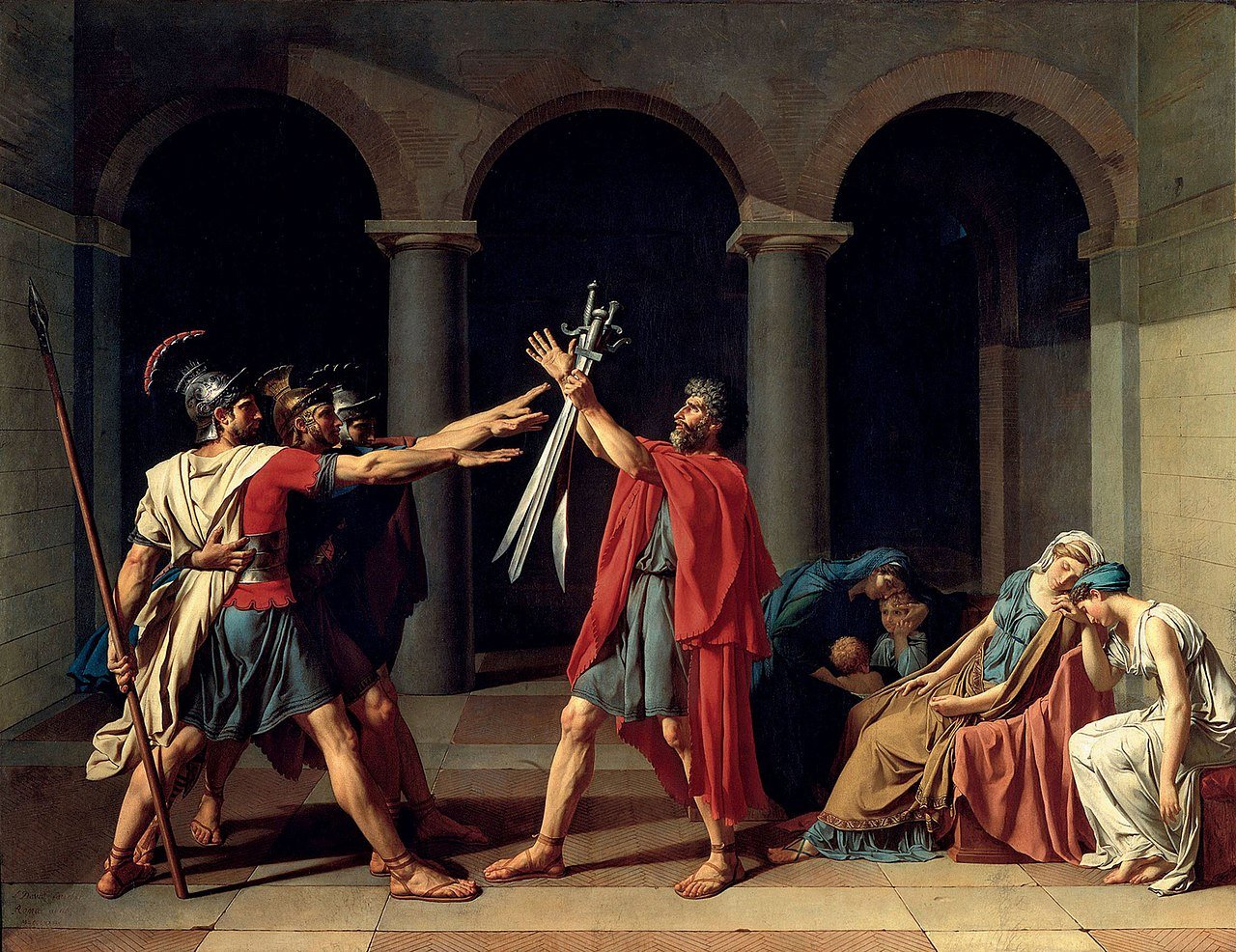Juxtapositions, art, and the Bible
Oath of the Horatii, 1785, Jacques-Louis David (1748-1825)As we try to understand a work of art, we typically employ a variety of techniques, mostly intuitively and occasionally quite cognitively. These include looking for juxtapositions. In a juxtaposition, two or more things are set up to be compared.
For example, in the movie Forrest Gump, the lead character (played by Tom Hanks) compares with Lieutenant Dan (played by Gary Sinise) or in Star Wars Luke Skywalker and Darth Vader create an obvious juxtaposition. Thinking about the two characters helps us better understand the movie. The same is true of Beethoven’s Fifth Symphony. In the first movement within the first couple of minutes, we hear two themes, one of them quite assertive, the other more lyrical. In David’s Oath of the Horatii above we see angular, aggressive figures in the center and left, while off to the right we see curved, despairing figures.
What happens if we try to understand the Bible as a work of art? Actually, we learn a lot. For example, reversal is a key juxtaposition in the Bible. In the Garden of Eden, the people juxtapose with the serpent. The reversal of their blissful position in paradise juxtaposes with their unhappy state following their rebellion against God. Barren women in the Bible, such as Hannah in 1 Samuel 1 and Sarai in Genesis 21:1-7 find their condition reversed, creating a juxtaposition. In Mary’s song in Luke 1:46-55, she sings of God as the one who reverses people’s fortunes. The genocidal Haman in Esther chapters 3 through 6 finds his fortunes reversed, much to his dismay.
Juxtaposition is part of the structure of the Bible. The Old Testament compares to the New Testament.
When we contemplate juxtapositions we find in a work of art as in the Bible, we come away with a richer, fuller understanding of the art—and of the Bible!
